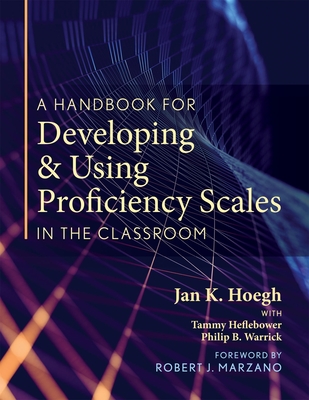
Hoegh, Jan K.
product information
description
g and utilizing high-quality proficiency scales. Through this practical handbook, you will gain access to a comprehensive toolkit of strategies, methods, and examples for a variety of content areas and grade levels. The author also outlines an array of accommodations and modifications to support students with disabilities, English learners, and gifted and talented students.
Benefits:
- Understand how to create and use proficiency scales to clearly frame classroom instruction and assessments.
- Learn how to write high-quality proficiency scales and review how to enrich student learning opportunities.
- Recognize the various ways teachers, students, and parents can use proficiency scales.
- Access rubrics, criteria checklists, and pacing guides that you can use in concert with proficiency scales to provide valuable feedback to students.
Contents:
Introduction
Chapter 1: The What and Why of Proficiency Scales
Chapter 2: Proficiency Scale Development
Chapter 3: Score 4.0--Complex Content
Chapter 4: The Use of Proficiency Scales in the Classroom
Chapter 5: Scales and Related Tools
Chapter 6: Using Scales With Exceptional Learners
Chapter 7: Scales for Behaviors That Promote Academic Success
Epilogue
Appendix A: Example Scales
Appendix B: Common Scale Templates With Examples
Appendix C: Scale Development Checklists
Appendix D: Score 4.0 Examples
Appendix E: Scales With Sample Assessments
References
Index
member goods
No member items were found under this heading.
Return Policy
All sales are final
Shipping
No special shipping considerations available.
Shipping fees determined at checkout.







